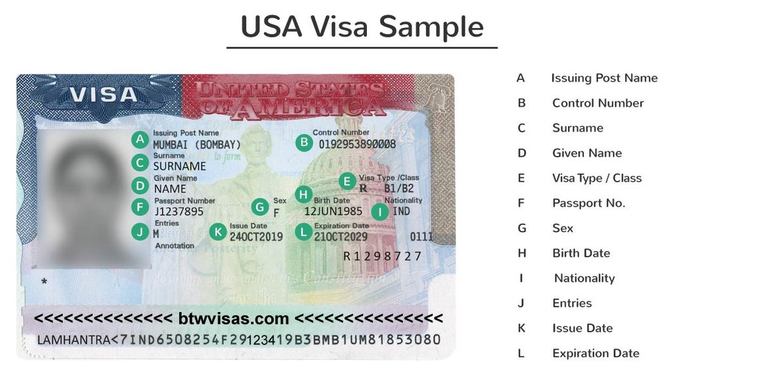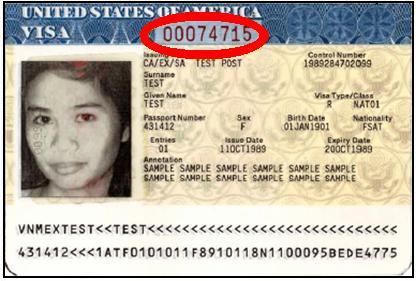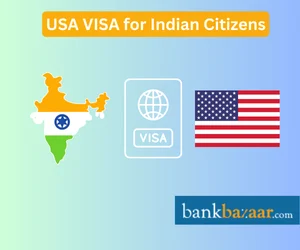Opening Opportunities: Important Info on US Visas for Indian Citizens
Maneuvering the complexities of US visa choices is necessary for Indian residents intending to check out possibilities in the US. With numerous classifications ranging from short-lived site visitor visas to pathways for long-term residency, comprehending the subtleties of each can considerably influence one's journey. This conversation will certainly highlight essential information, including application procedures and qualification criteria, that can equip people in their pursuit of brand-new experiences. As we unpack these vital facets, the question arises: what methods can one employ to improve their chances of a successful application?
Overview people Visa Kind
When passing through the facility landscape of US migration, understanding the different sorts of visas readily available is necessary for Indian people seeking entry into the US (Types Of US Visas). The US immigration system is mainly categorized into 2 broad classifications: immigrant visas and non-immigrant visas
Immigrant visas are assigned for those meaning to live permanently in the US. These consist of family-sponsored and employment-based visas, where candidates generally require an enroller. Non-immigrant visas, on the various other hand, accommodate individuals looking for short-term house, such as visitors, organization site visitors, and those traveling for certain purposes like job or research study.
Within the non-immigrant classification, a number of visa kinds exist, including B-1/ B-2 for organization and tourist, H-1B for specialty professions, L-1 for intra-company transferees, and O-1 for people with amazing capacities. Each visa has distinctive qualification needs and application processes, necessitating extensive research to figure out the ideal group.
Understanding these classifications is essential for Indian citizens, as it allows them to navigate the application process better, ensuring they pick the appropriate visa kind to satisfy their specific needs and goals. Types Of US Visas.
Pupil Visa Options
For Indian residents striving to study in the US, student visas provide an essential pathway to seek academic possibilities. The main visa groups for students are the F-1 and M-1 visas.
The F-1 visa is marked for academic trainees enrolled in a full time program at an approved institution, such as universities and colleges. This visa permits students to engage in on-campus work and, under certain problems, take part in optional sensible training (OPT) after finishing their level, providing beneficial job experience in their discipline.
On the other hand, the M-1 visa is intended for occupation or non-academic programs. It accommodates pupils seeking technical or trade training, allowing them to register in non-degree programs. M-1 visa holders may join practical training, yet it is usually more restricted compared to the F-1 classification.
To obtain a pupil visa, candidates need to secure admission to an U.S. organization, get a Type I-20, and demonstrate economic capability to support their education and living expenses. Recognizing these visa choices is considerable for Indian citizens planning to begin their instructional journey in the US.
Visa Categories
Several Indian residents looking for employment opportunities in the US might think about different classifications tailored to different expert needs and credentials. One of the most famous is the H-1B visa, designed for skilled workers in specialty line of work needing a college level or its equivalent. It enables US employers to momentarily use international workers, with a cap on the number of visas provided every year.
An additional important category is the L-1 visa, which assists in the transfer of staff members within multinational firms. The L-1A visa is for managers and execs, while the L-1B visa is for employees with specialized understanding.
The O-1 visa deals with people with remarkable capabilities in their area, including scientific research, arts, or service. For farming or seasonal work, the H-2A and H-2B visas are offered, permitting employers to employ foreign workers for short-lived positions.
Family-Based Immigration
Family-based immigration provides a path for US citizens and lawful permanent locals to reunite with their relatives from India. This migration classification is essential for preserving familial bonds and promoting the assimilation of relative right into USn society. US residents can seek for instant relatives, consisting of partners, kids, and parents, without facing yearly restrictions on visas. This expedited procedure significantly minimizes waiting times for these close household connections.
On the other hand, authorized irreversible homeowners may fund partners and unmarried children, yet they undergo yearly caps, leading to longer wait times. The family-sponsored immigration system is split right into 2 major groups: prompt family members and family members preference categories. The former includes those who have a straight relationship with an U.S. person, while the latter encompasses farther family members, such as brother or sisters and wedded youngsters of residents, and children of legal long-term residents.
For Indian residents looking for family-based immigration, recognizing the nuances of this system is imperative. Appropriate documents and adherence to application methods are essential for successful sponsorship. By navigating through these intricacies, families can function in the direction of reuniting and constructing their lives together in the US.
Long-term Residency Process
The procedure of obtaining irreversible residency in the US involves a number of key visa classifications customized for Indian citizens. Comprehending the application actions, including essential paperwork and qualification criteria, is crucial for an effective end result. Additionally, potential candidates need to know the anticipated timeline and details requirements connected with each classification.
Visa Categories Review
While going across the complexities of the US immigration system, Indian citizens seeking long-term residency needs to acquaint themselves with various visa classifications tailored to different conditions. The primary pathway for long-term residency is via employment-based visas, which are classified into several preferences, including EB-1 for people with extraordinary abilities, EB-2 for professionals holding postgraduate degrees, and EB-3 for competent workers. Each classification has details qualification needs and handling times.

Diversity visas, although restricted in number, provide an opportunity for people from underrepresented countries to use for irreversible residency via a lotto game system. In addition, altruistic choices such as asylum and refugee status offer pathways for those encountering mistreatment.
Recognizing these visa groups is crucial for Indian people, as they substantially affect the strategy for obtaining irreversible residency in the US. Each group's subtleties and needs demand careful consideration to align with individual scenarios and objectives.
Application Process Actions
Steering the application procedure for long-term residency in the US entails several vital steps that must be meticulously complied with to guarantee a successful end result. The trip usually starts with establishing the proper migration classification, such as employment-based or family-sponsored visas. Applicants must collect important documents, consisting of proof of eligibility, financial declarations, and individual identification.
As soon as the category is recognized, the next action is to file the Kind I-130 (Request for Alien Loved One) or Type I-140 (Immigrant Petition for Alien Worker), relying on the basis of the application. Adhering to the approval of the request, candidates will certainly need to finish the National Visa Facility (NVC) handling by sending the required charges and kinds.
Next off, the applicant should undertake a medical exam and obtain authorities clearance certifications. Once these are completed, a meeting will be scheduled at the US consular office or consular office. It is important to prepare extensively for this interview, as it can considerably influence the decision on the application. Upon approval, the applicant will receive their visa, giving them long-term residency in the United States.
Timeline and Needs
Charting the timeline and needs for acquiring long-term residency in the US is essential for Indian residents seeking to establish a long-lasting presence. The process primarily depends upon employment-based or family-sponsored pathways, each with specific prerequisites and timelines.
For employment-based immigration, the process normally starts with a labor qualification, which can take several months. Once approved, the employer files a Form I-140, Immigrant Petition for Alien Employee, which can take an added six months to a year, relying on the handling center. Complying with I-140 approval, applicants may need to await their priority day to come to be current, which can differ substantially based on the applicant's classification and native land.
For family-sponsored migration, US citizens can request for instant family members, which generally leads to faster processing. However, other family members groups might entail longer wait times as a result of annual caps.
Application Procedures
Understanding the application treatments for US visas is vital for Indian people seeking entry into the US. US Visas For Indian Citizens. This area will supply an overview of various visa categories and outline the step-by-step procedure for applying. By adhering to these standards, candidates can browse the intricacies of the visa efficiently
Visa Categories Review
Steering the different visa classifications offered to Indian citizens can be a complex process, but it is vital for those seeking to take a trip, function, or research in the US. The US visa system is classified mainly right into non-immigrant and immigrant visas, each serving distinct purposes.
Non-immigrant visas, such as B-1/ B-2 for company and tourism, F-1 for academic research study, and H-1B for specialized employment, permit short-term remains. Applicants must demonstrate their intent to return to India after their visit.
On the other hand, immigrant visas, consisting of family-sponsored and employment-based groups, supply a path to irreversible residency. These visas usually require sponsorship from a relative or employer in the US, along with a rigorous application procedure.

Step-by-Step Process
Commonly, the application process for US visas includes numerous crucial steps that candidates should diligently follow to ensure a smooth experience. The first step is to establish the suitable visa group based on the function of traveling, such as work, research, or tourism. When the group is identified, applicants need to finish the on-line DS-160 kind, providing precise personal info and travel details.
After submitting the DS-160, applicants ought to pay the visa charge, which varies by visa type. Next, arrange a consultation for a visa meeting at the nearest US Consular office or Consular Office. US Visas For Indian Citizens. It is important to plan for the meeting by celebration required papers, consisting of a valid visa, visa verification, fee payment invoice, and any type of sustaining documentation certain to the visa classification
On the day of the meeting, arrive promptly and gown suitably. Throughout the meeting, be prepared to respond to inquiries concerning your traveling objectives, financial stability, and connections to India. Ultimately, if authorized, the visa will certainly be stamped in the visa, permitting travel to the US. Adhering to these actions assures an efficient and reliable application procedure for Indian residents.
Tips for a Successful Application

Make certain that all types are completed accurately and truthfully. Small errors or noninclusions can cause delays and even rejections. It is suggested to gather all necessary supporting records, consisting of monetary statements, work letters, and proof of connections to India, which show your intent to return post-visit.
Get ready for your visa interview by practicing feedbacks to typical questions associated with your itinerary and background - US Visa Categories India. Self-confidence and clarity can substantially affect the officer's impression. Ultimately, take into consideration looking for help from credible immigration experts if you feel overloaded
Regularly Asked Inquiries
What Are the Handling Times for US applications?
Processing times for US visa can vary considerably based on the visa kind, application quantity, and the candidate's place - US Visas For Indian Citizens. Generally, applicants need to prepare for a handling period ranging from a couple of weeks to a number of months
Can I Adjustment My Visa Condition While in the US?
Yes, people can change their visa status while in the US, provided they fulfill eligibility needs and follow appropriate procedures. It is crucial to file the ideal application with US Citizenship and Migration Solutions (USCIS)
Exist Age Limits for US Visa Applicants?
There are usually no certain age limits for US visa applicants; however, particular visa classifications may have age-related qualification requirements. It is essential to assess the needs for each visa type to ensure conformity.
What Are Usual Reasons for Denial?
Usual reasons copyright denial consist of not enough funds, failing to demonstrate connections to the home country, insufficient application types, lack of correct paperwork, previous immigration offenses, and failure to fulfill eligibility standards for the certain visa classification.
How Can I Appeal a Visa Rejection Choice?
To appeal a visa denial, assess the consular police officer's factors, gather sustaining paperwork, and send an official interest the ideal authority, ensuring to stick to defined timelines and procedural demands for the allure process.